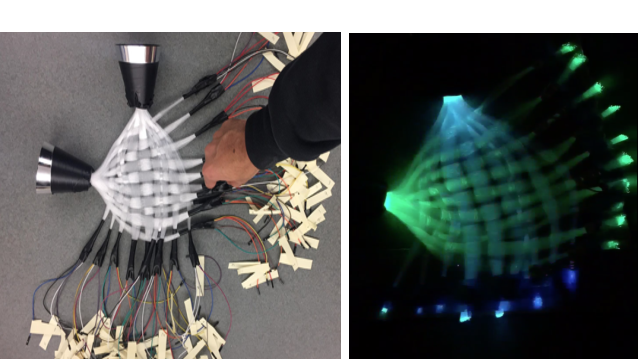LECTURE #01: Andrey Sudarikov – playdisplay
Andrey Sudarikov is a designer from Russia, founder and creative director of PlayDisplay company based in Moscow. In this lecture, he talked about four projects, creation processes, and the problems they encountered at the design stage.
Also, the message went through the entire presentation that in any project it is important how the team interacts with each other and with the customer. How important it is to take into account the human factor, the customer himself and his understanding of the project and especially for international projects – cultural characteristics.
LECTURE #3: Astrid Kury „Why Collaborate?”
Astrid Cury is the director and culturologist at the „Akademie Graz“. She told how important cooperation is and why creative people, especially designers, artists, etc. should cooperate as much as possible.
Astrid asks this question: „In which world do you want to live in? In an egoistic, competitive, isolated one or in one where we share our ideas to get to the best outcome?“
She says collaboration has many benefits:
- unique ideas
- perfect equation of form and content
- increases social relevance and impact
- includes work on democracy
- to promote social cohesion and enable equal access
But in the beginning, the collaborative process is always very complicated. People should find a way of interaction that is comfortable for them and develop a clear structure so that it is easier for everyone to work.
LECTURE #4: Florian Doppel-Prix “is it art or can we toss it?”
During this lecture, I realized that, like in the previous lecture from Astrid Kury, you cannot work in isolation from other people. And it can be completely different people, professions and areas of activity. Everything can intersect even within the framework of one project. Especially if we are talking about creative specialties.
Almost all the projects that he showed are interactive and work to immerse the visitor of the exhibition in a certain atmosphere.
LECTURE #5: Burcin Cem Arabacioglu “sustainability from interior design perspective”
In this lecture, Professor at the University of Istanbul, where this city is also a city of design in Turkey, spoke about environmental friendliness, sustainability and conscious design in terms of architecture and interior design. This topic is very close and interesting to me, since I did this at my bachelor’s degree. But, to my great chagrin, it was extremely difficult to follow the lecture due to the low quality of the sound, which did not allow me to concentrate.
LECTURE #6: Sylwia ulicka “questioning material culture”
Despite the fact that Sylvia had amazing lecture material on the ideas of sustainability and eco-efficiency, it was a disappointment to see her reading all the articles from the sheet.
In this lecture, Sylvia casts doubt on the material culture, it refers to the fact that we as designers must strive to achieve sustainability in everything, and for this it is necessary to identify as many ways tools and techniques, as well as to understand what and are better.
“Sustainable development meets the needs of the present without compromising the ability of future generations to meet there own needs.”
In my opinion, this proposal very well summarizes the goal to which we must strive in society.
LECTURE #7: Ursula tischer “keynote at relating systems thinking and design symposium”
Despite the fact that this symposium and presentation by Ursula Tisher was recorded back in 2015, this topic is still very relevant. At this presentation, Tisher talked about the problems of social and environmental policy.
She sees that one of the variants to solve this problem is attracting and educating as many people as possible, giving them the opportunity to see or even participate in the process of creating the product. Also, she calls “entertainment” as an important factor that will attract people to this. As an example, she shows a trash can, which produces a variety of sounds, when a person throws something inside.
“We trashing the planet, we crashing the planet and not even have fun!”
LECTURE #9: Wolfgang Schlag “radio work”
Wolfgang Hose is a journalist who shared his experience and spoke in his lecture about the advent of radio and its formation as a source of mass information. What was the radio at the dawn of its formation and what it is now.
I agree with his final conclusion – the radio will not leave. Rather, it is just beginning to regain popularity. Over the past couple of years, the number of people who began to listen to more radio in my environment has increased significantly. I myself began quite often to listen to various radio podcasts on topics of interest to me.

